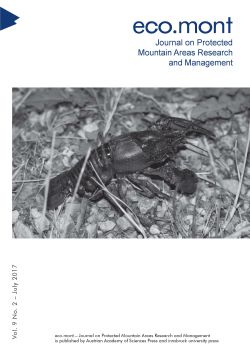
Eco.mont Vol. 9 Nr. 2, pp. 30-41, 2017/06/29
Journal on Protected Mountain Areas Research and Management

The availability of spatial data is a key concern in protected area management, including visitor management. Obtaining spatial data is often laborious and expensive. New approaches involving the general public in data collection can provide a solution. Among existing crowdsourcing initiatives, OpenStreetMap (OSM) is the largest. But, while public participation geographic information systems (PPGIS), volunteered geographic information (VGI), and user-generated content (UGC) are used in visitor management, OSM still receives less attention. In this paper, questions regarding the possibilities of using OSM data in visitor management are discussed. The focus is on recreational infrastructure data, since infrastructure is an important means for guiding and managing visitors. The Berchtesgaden National Park (Germany) served as the study area. A list of the relevant elements of the recreational infrastructure in the protected area was elaborated, and an analysis was carried out to determine how useful the OSM tagging system is for describing these elements. In addition, data held in the OSM database was assessed first with regard to which infrastructure elements the OSM database holds data for, and second for the amount of data held. Along with the benefits, there are also challenges in using OSM. Thus, there is a need to expand the OSM tagging system to allow the description of different types of nature-based recreational infrastructure and to increase people’s involvement in OSM.
Keywords: collaborative mapping, crowdsourcing, community-based data, participatory approaches, visitor management